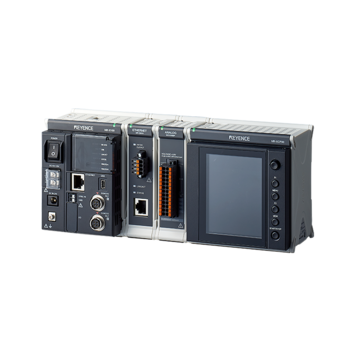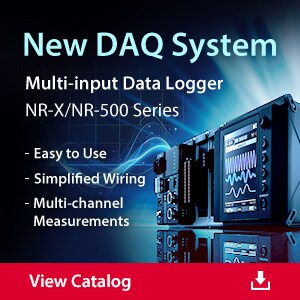Data Acquisition (DAQ)
Real-Time Data Acquisition (DAQ) Systems
-
Tags:
- Data Acquisition
Modern industry often relies on measuring various metrics with real-time data monitoring and data storage for subsequent data analysis. This is where real-time data acquisition systems come in.
Known as real-time DAQs, these devices are primarily used to collect and document different measurement readings as data in a manner that allows storage and subsequent retrieval of said data. However, they also enable real-time data monitoring for immediate decision-making and integration with process control.
Features of Real-Time Data Acquisition (DAQ) Systems
Real-time DAQs, such as KEYENCE’s NR-X Series or the NR-500 Series of portable data loggers, come packed with different features that make them indispensable in an industrial setting, including:
- High-Speed Data Processing: A defining feature of a real-time DAQ is the ability to handle high-speed data processing, which ensures the data read by the sensors is captured, processed, and ready for immediate analysis. This is crucial for instantaneous feedback, such as automated control systems or high-speed monitoring applications.
- Low Latency: Low latency is yet another fundamental feature of real-time DAQ systems, ensuring minimal delay between data capture and is available for processing and effective decision-making. This is important in applications that demand high-precision control, in which even milliseconds of delay could lead to significant consequences.
- Multi-Input Channels: Multi-input channels ensure that a real-time multi-input DAQ can capture, process, and even display multiple measurements simultaneously. This feature must be backed by advanced synchronization capabilities, which allow for precise and correlated time stamping of data collected from different sources.
- Integrated Signal Conditioning: Real-time DAQs usually have built-in signal processing, which takes the raw measurement data from various sensors and converts it into a digital, legible format. This often includes signal amplification, filtering, and analog-to-digital conversion. Some models, like the NR-X Series, perform signal conditioning inside the corresponding processing unit.
Applications of Real-Time Data Logger for Various Industries
Thanks to their versatility, KEYENCE’s real-time multi-input data loggers are used in different applications across various industries. This includes the following:
- Automotive Industry: Real-time data loggers are used for body/chassis scanning, durability testing, and wiring testing.
- Electronics Industry: They’re also commonly used to inspect the performance of various components and PCB assemblies.
- Molding Machines: These are used in the plastics and polymer industries for accurate temperature monitoring.
- HVAC: Real-time data loggers are also used for fatigue testing of air conditions and outdoor equipment.
Of course, the list of industry-specific applications is extensive thanks to their versatility and ability to measure different physical properties.
We’re here to provide you with more details.
Reach out today!

Benefits of Real-Time DAQ Systems
Some benefits of real-time DAQ systems include:
- Accurate and Real-Time Data Monitoring: Real-time DAQs provide precise and accurate measurements, crucial for process optimization, quality control, and immediate decision-making.
- Integration with Process Control: Process Control and Data Acquisition Systems are separate entities. However, thanks to their integrability, real-time DAQs have the ability to provide process control with real-time, highly accurate deterministic data.
- Automation and Reduced Human Error: Real-time DAQs provide an automated method of data collection, minimizing human error. Additionally, digital storage is cost-effective, reliable, and space-efficient, which aids information retrieval for subsequent analysis.
Best Practices for Implementing High-Speed Data Acquisition Systems
One of the best practices for implementing a high-speed data acquisition system is to understand what type of measurement you want to record and whether said measurement will be used as deterministic data for process control.
After that, it’s essential to integrate the real-time DAQ with your pre-existing setup to capture real-time data more effectively. You also have to mind the appropriate connectivity options, data backups, and data structuring.
Why Choose Real-Time DAQ Systems from KEYENCE
KEYENCE offers a comprehensive range of different sensors and data acquisition systems for industrial applications. If you’re interested in adding real-time DAQ to your manufacturing process, contact KEYENCE, and the trained professionals will answer any inquiry you might have about integrating our product within your system.
Contact us to learn more about how our advanced technology can help take your business to the next level.
Contact Us



